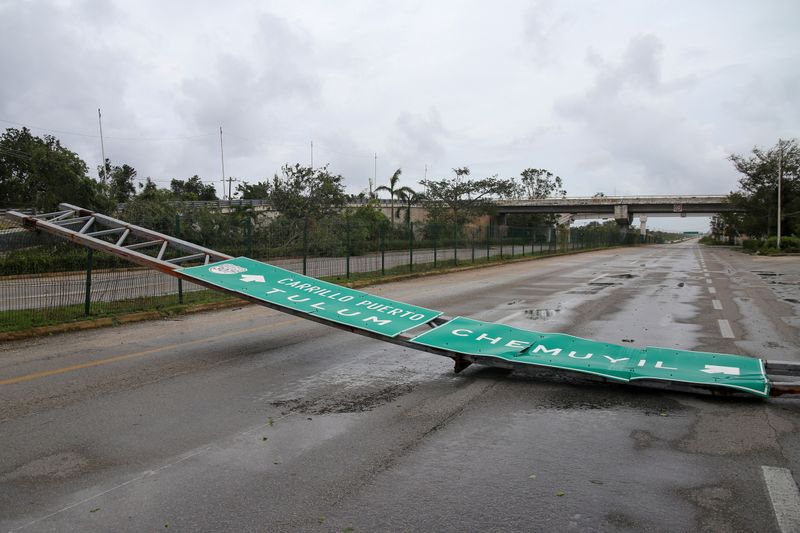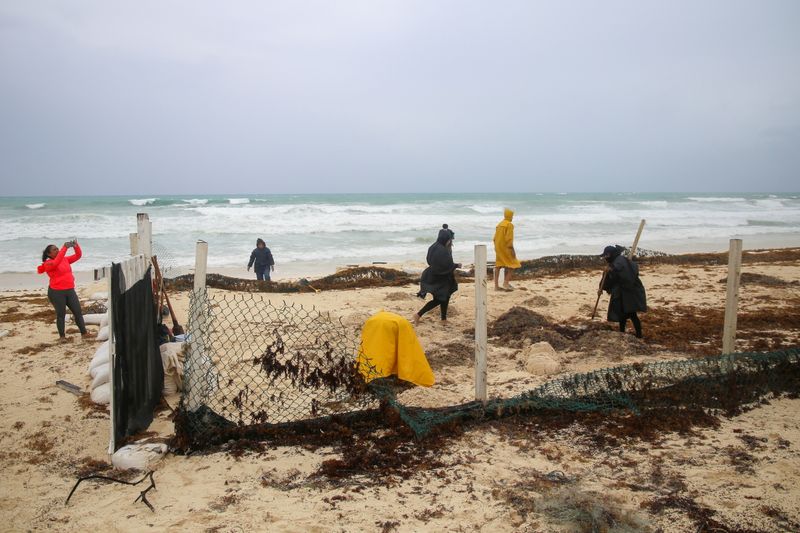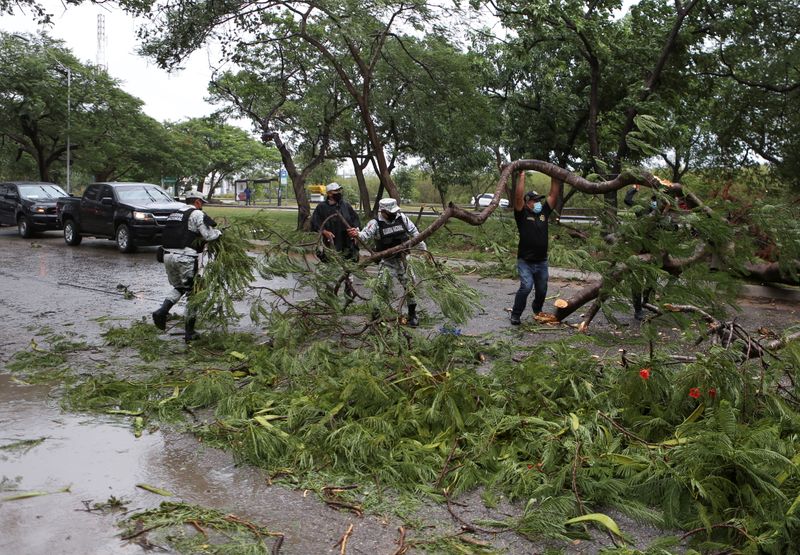MEXICO CITY (Reuters) -Tropical storm Grace dumped heavy rain on Mexico’s Caribbean coast on Thursday but appeared to have spared tourist resorts serious damage as it moved across the Yucatan Peninsula into the Gulf of Mexico, where it was forecast to strengthen again.
The government of Quintana Roo state, home to beach resorts Cancun and Tulum, said no one was hurt during the passage of Grace. It struck the Mexican coast as a Category 1 Hurricane in the morning before weakening to a tropical storm inland.
Social media images showed downed street signs and palm trees flailing in the wind near Tulum, and authorities reported some floods, power outages and toppled trees.
Heading westward, Grace was expected to move across the southern Gulf of Mexico on Friday, the Miami-based National Hurricane Center (NHC) said.
“Intensification is likely now that the center has emerged over the Gulf of Mexico, and Grace is forecast to be a hurricane when it makes its second landfall on the mainland coast of Mexico late Friday or early Saturday,” the NHC said in an update. “Rapid weakening is expected after Grace moves inland over central Mexico.”
The NHC said Grace would dump 4-8 inches (10-20 cm) of rain over the Yucatan Peninsula through Friday, and up to 12 inches in some areas. The heavy rainfall would likely cause areas of flash and urban flooding, it added.
Mexican officials said preparations had been made for the hurricane’s arrival, with dozens of military and rescue workers as well as staff from the national power utility, gearing up to help.
“We’re ready,” Laura Velazquez, head of Mexico’s civil protection authority, told a regular news conference standing alongside President Andres Manuel Lopez Obrador.
Velazquez said the states of Quintana Roo, Campeche, Yucatan and Tabasco were likely to receive heavy rainfall.
Grace unleashed downpours and flooding over Haiti and Jamaica earlier this week. By Thursday evening it was about 65 miles north-northwest of Campeche, with maximum sustained winds of 60 miles per hour (97 km per hour), moving west at 15 mph (24 kph), the NHC said.
(Reporting by Dave Graham, Daina Beth Solomon, Diego Ore and Stefanie Eschenbacher; editing by Frances Kerry, Cynthia Osterman and Grant McCool)

























